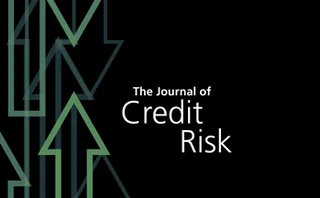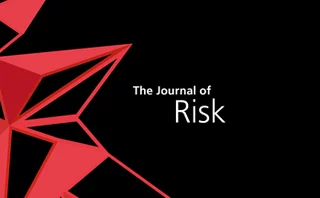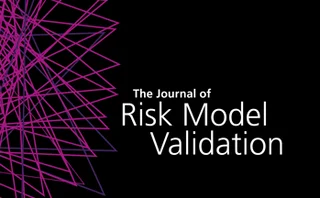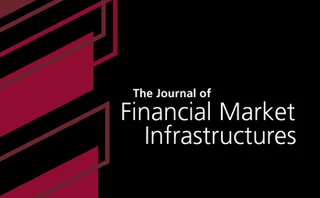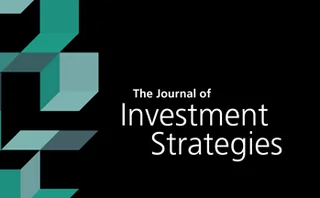Original research
Brent crude oil spot and futures prices: structural break insights
This study focuses on the analysis of long-run and short-run relationships between Brent crude oil spot and futures prices during the first Gulf War (1990–91) and the global financial crisis.
Estimation of value-at-risk for conduct risk losses using pseudo-marginal Markov chain Monte Carlo
The authors propose a model for conduct risk losses, in which conduct risk losses are characterized by having a small number of extremely large losses (perhaps only one) with more numerous smaller losses.
Cyber risk management: an actuarial point of view
This paper points out the peculiarities of cyber insurance contracts compared with the classical nonlife insurance contracts from both the insurer’s and the insured’s perspectives. The main actuarial principles that are fundamental to any valuation in a…
Costs of capital under credit risk
In cost-of-capital computations, credit risk is only taken into consideration at the level of the debt beta approach. We show that applications of the debt beta approach in company valuation suffer from unrealistic assumptions about the market index and…
Basel risk weight functions and forward-looking expected credit losses
The authors establish that the combination of lifetime ECL and the Basel Capital Adequacy Framework, which relies on a one-year horizon, results in capital overestimation. Alongside this finding, and in order to alleviate the problem, they propose two…
Credit valuation adjustment wrong-way risk in a Gaussian copula model
In this paper, we present an analytical expression for CVA with WWR under the assumption of the lognormally distributed trade value.
Measuring expected shortfall under semi-parametric expected shortfall approaches: a case study of selected Southern European/Mediterranean countries
In this paper, the authors investigate the applicability of semi-parametric approaches for estimating expected shortfall.
Crash risk exposure, diversification and cost of equity capital: evidence from a natural experiment in China
Based on a broad sample of Chinese listed firms for the period 2001–10, this study investigates the effect of stock price crash risk exposure on the cost of equity capital and uses the split share structure reform as an exogenous shock to test whether…
Backtesting expected shortfall: a simple recipe?
In this paper, the authors introduce a new ES backtesting framework based on the duality between coherent risk measures and scale-invariant performance measures.
The impact of enterprise risk management on the performance of companies in transition countries: Serbia case study
In this paper, seven hypotheses are defined, on the basis of which a theoretical model is developed to examine how different sources of enterprise risk affect the operational performance of Serbian companies and their risk of losing market position.
Quantification of the estimation risk inherent in loss distribution approach models
In this paper, the authors contribute to the measurement of model risk by focusing on the quantification of estimation risk.
Debt and the oil industry: analysis on the firm and production level
This paper analyzes the relationship between debt and the production decisions of companies active in the exploration and production of oil and gas in the United States.
Variance optimal hedging with application to electricity markets
In this paper, the author uses the mean–variance hedging criterion to value contracts in incomplete markets.
A study on window-size selection for threshold and bootstrap value-at-risk models
This paper investigates the effects of window-size selection on various models for value-at-risk (VaR) forecasting using high-performance computing.
Measuring the systemic risk of China’s banking sector: an application of differential DebtRank
This paper investigates the systemic risk of China’s banking sector via network analysis and differential DebtRank from 2007 to 2016.
Study of correlation impact on credit default swap margin using a GARCH–DCC-copula framework
In this paper, the authors establish generalized autoregressive conditional heteroscedasticity–dynamic conditional correlation (GARCH–DCC) and constant conditional correlation (CCC) copula model frameworks to study time-varying correlation among credit…
Static and dynamic risk capital allocations with the Euler rule
This paper studies the volatility of the Euler rule for capital allocation in static and dynamic empirical applications with a simulated history.
A consistent investment strategy
This paper introduces a consistent performance strategy (CPS), which, if followed, leads to a portfolio having consistently positive returns over time and exhibiting a steady upward trend.
Central counterparties: magic relighting candles?
In this paper, the rules of selected major CCPs (LCH, CME, Eurex and ICE) are reviewed for both their end-of-waterfall procedures and the rights granted to clearing members in end-of-waterfall scenarios.
Factor-based tactical bond allocation and interest rate risk management
This paper offers two composite bond market factor investment strategies each for the Swiss bond market and for the global sovereign bond market.
Applying existing scenario techniques to the quantification of emerging operational risks
This paper sets out techniques for: (a) identifying systematically emerging threats, their timescales, and interrelationships (eg, feedback loops and domino effects); (b) quantifying operational risks through structured scenario analysis processes that…
An investigation of cyber loss data and its links to operational risk
This paper investigates cyber loss data and focuses on quantifying the direct financial and compensatory losses emanating from cyber risks.
The risk markup of intermittent renewable supply in German electricity forward markets
This paper presents an empirical analysis of how power shocks resulting from intermittent renewables affect the forecast error of the forward premium in German electricity markets.
A new approach to evaluating the cost-efficiency of complex hedging strategies: an application to electricity price–volume quanto contracts
In this paper, the authors propose a new hedging assessment model, the economic value of the incremental expected shortfall (EVIES), from a cost-efficiency perspective.


